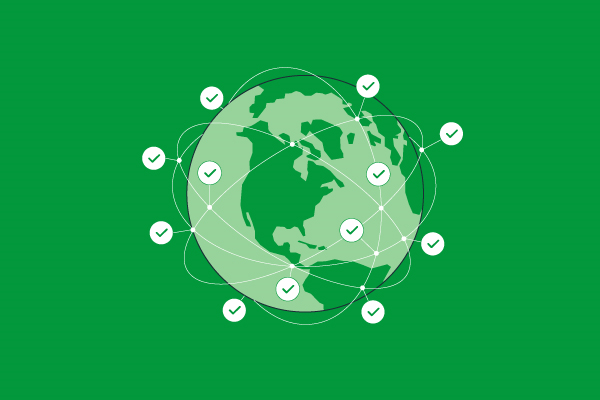Working of Online Payment Platforms | Payment Gateway Website System Architecture
Oceanpayment is a provider of online payment platforms, offering service of payment gateway website system architecture which is fast, smooth, and secure.
Do you know that almost 50% of the world population makes use of Mobile/Digital wallets for making transactions while shopping online? However, only 3.3% of the population prefer cash on delivery. Well, it isn’t hard to believe because online payment platforms offer a secure way to process payments. Here, you will understand the working of payment gateway system architecture.
Payment Gateway System Architecture
Before diving deeper into the functionality of online payment platforms, let us first take a look at some terminologies of payment gateway website:
1. Encryption is a series of steps followed for converting data or information into a secure code.
2. Secure Servers – It is a server that follows the SSL protocol for offering secure online transactions.
3. Acquiring Bank – It is a financial institution that helps merchants in processing debit and credit card transactions.
4. Card Schemes – They are the payment networks lined with credit or debit cards.
5. Issuing Bank – Bank that issues credit or debit cards to customers.
Let’s understand how payment gateway website works:
1. Customer place online orders on the website.
2. The request can be forwarded to the Payment Gateway Wesbite.
3. Payment gateway website collects all the required information like transaction and credit card details. It stores the data in secured servers.
4. A payment gateway website transfers the information to the acquiring bank.
5. Acquiring the bank transfers the authorization request to the card network. Once the payment request is approved, it can be processed once again to the issuing bank through payment gateway website. If the payment isn’t approved, the card network sends back no approval message, including an explanation to the acquiring bank.
6. If payment is successful, the issuing bank sends the signal back to the online payment platforms that a transaction is successful.
7. Lastly, the payment gateway website helps to notify the customer regarding the acceptance or decline of payments.
Benefits of Online Payment Platforms
1. Seamless Transaction
The whole process of payment gateway website only takes 3 seconds to complete. You might think it’s not possible, but that’s how it works. You can try this by making a purchase online.
2. Avoids Online Malicious Activities through Payment Gateway Website
Online payment platforms use VPN authentication, CVV, CCV, and AVS detector to avoid malicious activity. A secure payment gateway system architecture ensures that merchants and customers are safe from malicious activities
3. Provide Different Payment Methods with Payment Gateway Website
Customers use different payment methods. So, instead of integrating different payment processors, you can just integrate perfect online payment platforms. A best payment gateway system architecture offers different payment methods to accommodate customers.
How to Choose Best Online Payment Platforms?
It is also important to know the needs and expectations of customers in online payment platforms, apart from understanding the basics. You need to understand payment gateway system architecture before making a decision. So, here are some factors that you should keep in mind while looking for the best payment gateway for your business.
1. Multiple Payment Modes with Payment Gateway Website
A perfect payment gateway system architecture supports multiple payment modes. Having different payment modes can be helpful to cater to the needs of customers in a better way.
2. Security Protocols
You need to ensure that online payment gateway system architecture offers the following features:
1. SSL Certificate
2. Server Side Security & Firewall
3. GDPR
4. Multi-Layer Security Protocols
5. PCI DSS Compliant Platform
3. Opt for Billing Platforms with Payment Gateway Website
Billing platforms offer multiple payment gateways. A business that operates globally needs to be aware that each country has its own preferred and trusted payment gateways and how payment gateway system architecture works. To fulfill needs of your customers globally, you should opt for billing online payment platforms.
4. Recurring Payments with Payment Gateway Website
Recurring payments are becoming popular nowadays, and it is important that you choose a payment gateway system architecture that offers recurring payments to your customers. So you should choose online payment platform offers this feature.
Conclusion
If you want to make your online business successful, it is better to choose an online payment platform that offers seamless transactions. Make the right choice according to your business needs. Consider Oceanpayment if you need a budget-friendly, secure, reliable, and flexible choice. It offers an ideal payment gateway system architecture that supports Automated and Flexible Billing. You can get smart record-keeping and analytics & insights. Try Oceanpayment today and make the process of payment seamless with the help of advanced payment gateway website.
Today’s ecommerce merchants have plenty of options when it comes to online payment Platforms. That’s why, in this article, we’ll be reviewing solutions for accepting payments online and discuss about what exactly is a payment gateway? How does it work? How to choose a payment gateway for your website?
Key Features of Online Payments
Before researching into the definition of payment gateways, we need to identify the key players in online payments. When a customer clicks the “Pay” button on your website, these are the main participants involved in the payment process:
Merchant: This is you, that is, an online business operating in any vertical field (travel, retail, e-commerce, games, foreign exchange, etc.) to provide customers with products or services.
Customers: Customers, also known as cardholders, wish to access products or services sold by merchants and initiate transactions.
Card issuing bank: The issuing bank is the customer bank that issues the cardholder’s credit or debit card on behalf of the card plan (Visa, Mastercard).
Acquiring bank: Also known as an acquiring bank, an acquiring bank is a financial institution that maintains a merchant’s bank account (called a merchant account). The acquiring bank passes the merchant’s transaction to the issuing bank to receive payment.
What is Payment Gateway?
Payment gateway: The interface between the bank financial network system and the Internet network is a set of server equipment operated by the bank to convert data transmitted on the Internet into internal data of the financial institution or a third party designated to process merchant payment information and customer payments instruction.
Any business that collects online payments or accepts credit/debit card payments needs an online payment gateway.
It is important to research and find the correct payment gateway provider that suits your unique needs.
Payment gateways should provide many benefits, namely fast settlement of payments, barrier-free transaction processes, and an excellent overall experience every time.
So, what else should be paid attention to in the payment gateway?
• Security: Secure transactions are the primary requirement of any online payment collection company. Customers must trust transactions, and their personal and financial information is safe during online transactions. It should ensure the security of the information entered by the customer. Such services should comply with PCI standards.
• Customer experience: Payment gateways should provide unique and fast payment processing and payment customization. It should be mobile optimized, safe and convenient, which will provide customers with a seamless shopping experience.
• Global payment acceptance: We live and work in the global market. The payment gateway should support multi-currency transactions
• Merchants settled: Payment gateways should provide the fastest merchants settled, because online transactions are the main demand in today’s world. Processing and setting fees and rates should be in line with the merchant’s budget.
• Payment options: Last but not least, payment gateways should provide multiple payment options. The customer should be able to choose the payment method he/she is most familiar with, which can be credit/debit card, online banking, mobile wallet, UPI or any other method.


How does Payment Gateway work?
From filling in the card information to the final inflow of the payment into the merchant account and settlement, the payment gateway mainly goes through the following steps:
Step 1: After the customer places an order online and pays, he/she needs to enter the credit/debit card details.
Step 2: Use Secure Sockets Layer (SSL) encryption to encrypt the card details in a secure way for sending between the browser and the merchant’s web server.
The payment gateway eliminates the merchant’s Payment Card Industry Data Security Standard (PCI DSS) compliance obligations without having to redirect customers outside the website.
Step 3: After that, the merchant forwards the transaction details to their payment gateway, which is also an SSL encrypted connection with the payment server hosted by the payment gateway.
Step 4: The payment processor forwards the transaction information to the Card Schemes (ie: Visa/MasterCard/American Express).
Step 5: Next, the credit card issuer receives the authorization request, verifies the available credit or debit card, and then sends the response back to the processor (through the same process as authorization) and the response code (that is, approval or rejection). The response code also helps convey the reason for the transaction failure, such as insufficient funds.
Step 6: The processor then forwards the authorization response to the payment gateway, and the payment gateway receives the response and forwards it to the interface for processing the payment. This process is called authorization or “authentication.”
Step 7: After the merchant completes the order, the above process can be repeated, but this time the authorization is “cleared” by completing the transaction.
Normally, the “cleanup” is only initiated after the merchant completes the transaction (ie, the order is shipped).
This causes the issuing bank to “clear” the “auth” (that is, to transfer the auth-hold to the debit) and be ready to settle with the merchant’s acquiring bank.
Step 8: The merchant submits all approved authorizations to the acquiring bank in the form of “batch” (end of day) for settlement through its processor.
If it has not been clearly “cleared”, this will usually reduce or “clear” the corresponding “identity verification”.
Step 9: The acquiring bank sends a batch settlement request to the issuing bank.
Step 10: The credit card issuing bank makes a settlement payment to the acquiring bank (in most cases the next day).
Step 11: The acquiring bank then deposits all approved funds into the merchant’s designated account.
Selecting an online payment platform for your website
Oceanpayment is PCI level 1 full-service payment solutions provider. Think of it as one-stop payment platform, where your payment service provider offers you a flexible, easy to use payment service that includes payment gateway, acquiring, popular Alternative Payment Methods and fraud screening.
Want to find out how we can help you maximize your revenue with our global payment solutions? Talk to our payment experts and start accepting online payments today. Come and get in touch with us!








Comments are closed.